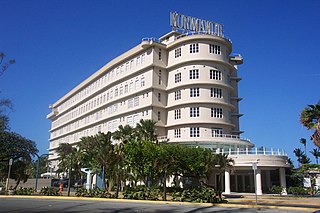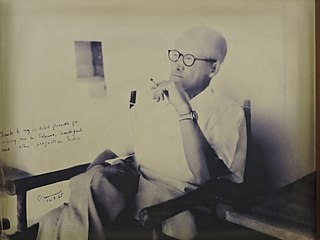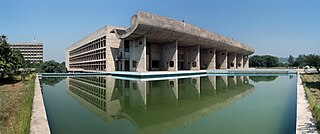The year 1976 in architecture involved some significant architectural events and new buildings.

The year 1939 in architecture involved some significant events.
The year 1953 in architecture involved some significant events.

The year 1942 in architecture involved some significant events.
Cedric Price FRIBA was an English architect and influential teacher and writer on architecture.

Pierre Jeanneret was a Swiss architect who collaborated with his cousin, Charles Edouard Jeanneret, for about twenty years.

Berthold Romanovich Lubetkin was a Soviet émigré architect who pioneered modernist design in Britain in the 1930s. His work includes the Highpoint housing complex, London Zoo penguin pool, Finsbury Health Centre and Spa Green Estate.

Minnette de Silva was an internationally recognized architect, considered the pioneer of the modern architectural style in Sri Lanka. De Silva was a fellow of the Sri Lanka Institute of Architects.

Amanda Jane Levete CBE is a Stirling Prize-winning British architect, and principal of AL_A.

Prempeh College is a public secondary school for boys located in Kumasi, the capital city of the Ashanti Region, Ghana. The school was founded in 1949 by the Asanteman traditional authority, the British Colonial Government, the Methodist Church of Ghana and the Presbyterian church of Ghana. The School is named after King of Ashanti, (Asantehene) Sir Osei Tutu Agyeman Prempeh II, who donated the land on which the school was built. and was modeled on Eton College in England. The school topped matriculation at the Kwame Nkrumah University of Science and Technology in 2004 with 441 students admitted and in 2012, with 296 students from the college admitted, and is considered to be one of the best secondary schools in Ghana. The School has won the National robotics championships a record three times between 2013 and 2016. In 2016 Prempeh College won the Toyota Innovation Award at the International Robofest World Championships held in Michigan, USA.

Rogers Stirk Harbour + Partners LLP (RSHP) is a British architectural firm, founded in 1977 and originally known as the Richard Rogers Partnership. Its main offices are located in the Leadenhall Building, London. Previously they were at the Thames Wharf Studios. In its various incarnations it is known for many important buildings including Lloyd's building and the Millennium Dome in London and the National Assembly for Wales building in Cardiff.

Eric Alfred Lyons CBE (1912–1980) was a British designer and architect. He achieved critical recognition in his development of family and technology-embracing housing communities in England in the latter part of the 20th century. His partnership in Span Developments led to the building of over 73 estates, some of which have achieved Conservation area status in recognition of the close communities created with substantial garden areas, glass and light, façade angles used for privacy and decoration and separate garages as a practical Bauhaus for car-based culture and high point of Modern Architecture widely described a "successful, experimental modernism".
John Maxwell Hutchinson is an English architect, broadcaster, and Anglican deacon. He is a former President of the Royal Institute of British Architects (RIBA).
Stephen Gardiner was a British architect, teacher and writer.

The Tecton Group was a radical architectural group co-founded by Berthold Lubetkin, Francis Skinner, Denys Lasdun, Godfrey Samuel, and Lindsay Drake in 1932 and disbanded in 1939.
Arthur Baldwinson (1908-1969) was one of Australia’s first generation of prominent modernist architects to experience the European modernist movement first hand. His modernist contemporaries include Roy Grounds and Frederick Romberg in Victoria, as well as Sydney Ancher and Walter Bunning in New South Wales; their respective Australian architectural careers in modernism began in the late 1930s. Baldwinson’s active professional career as an active practising architect was relatively short (1938-1960).











